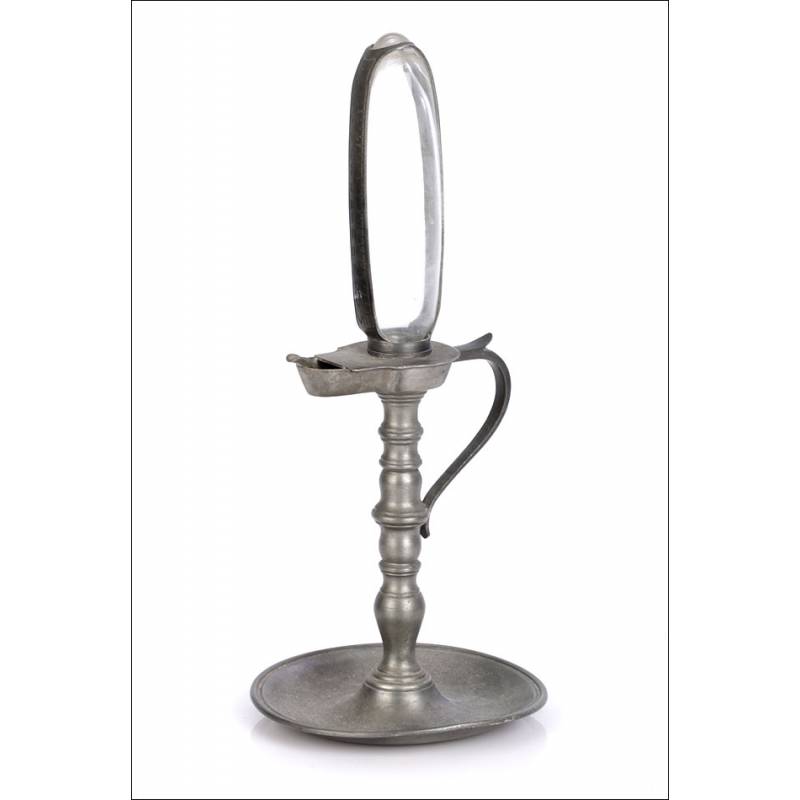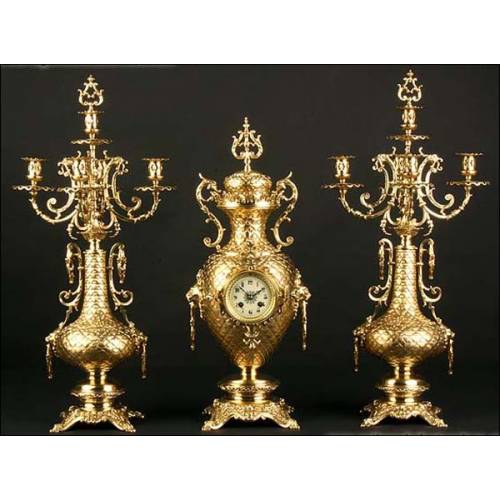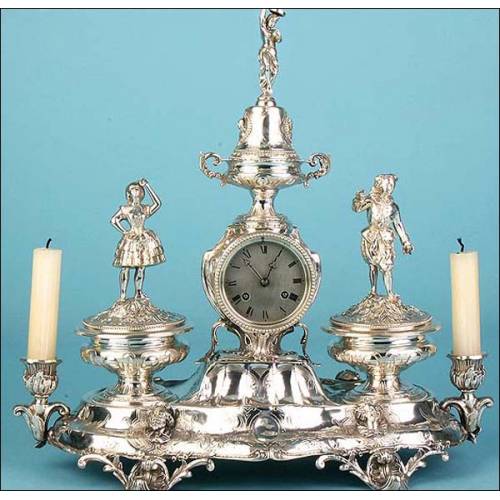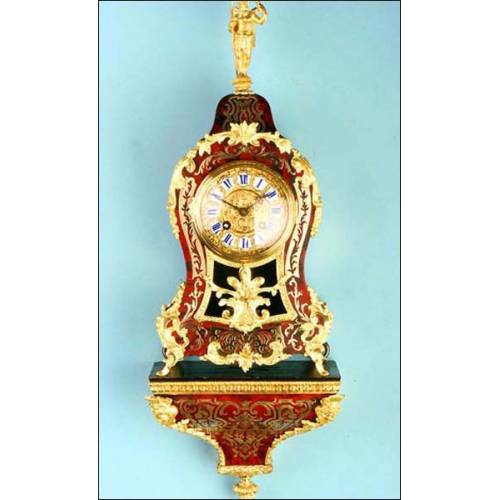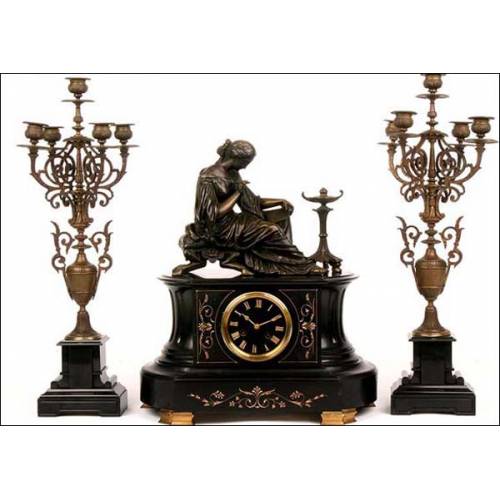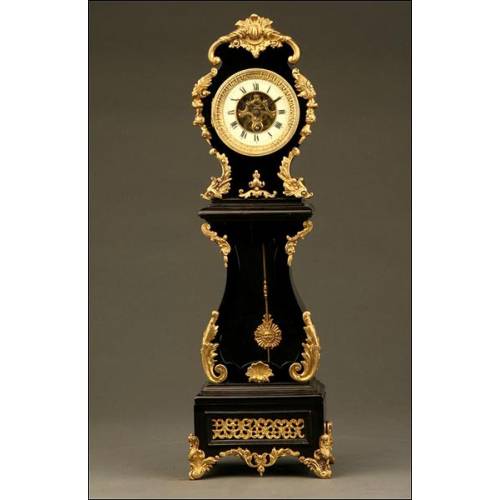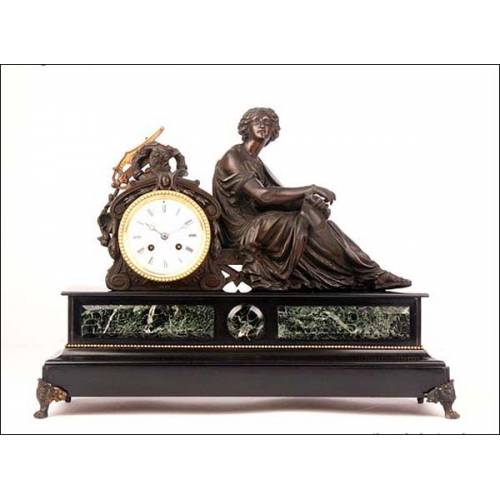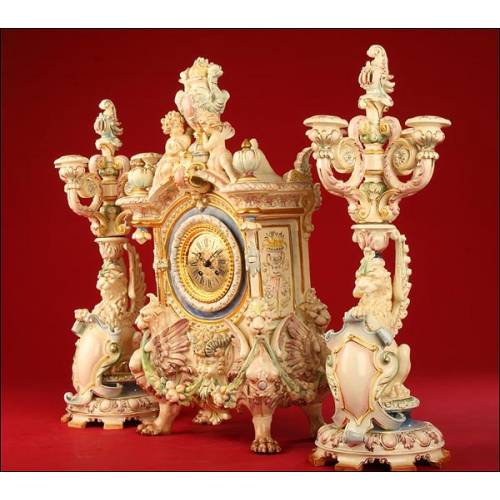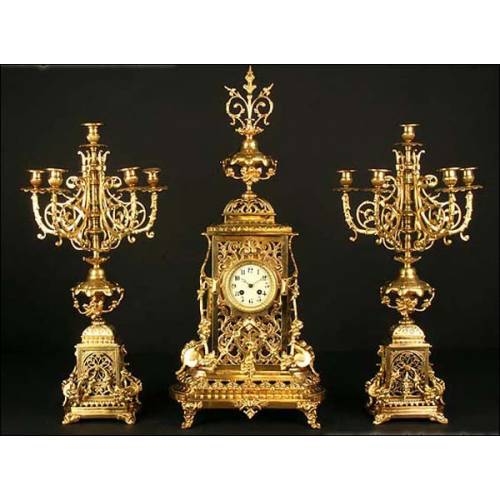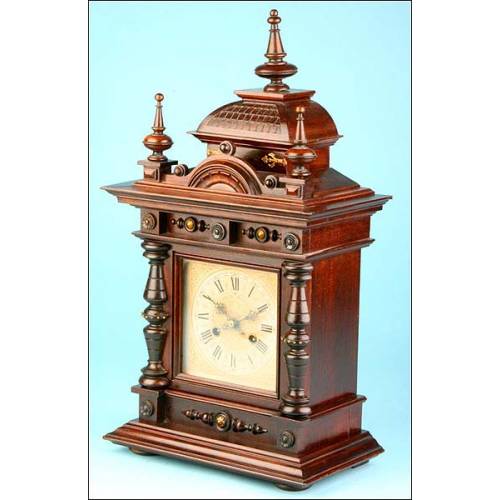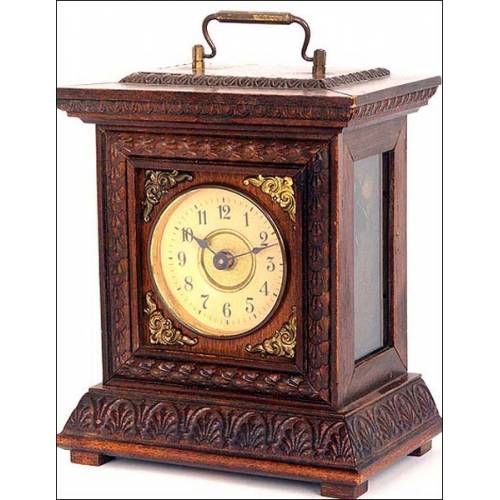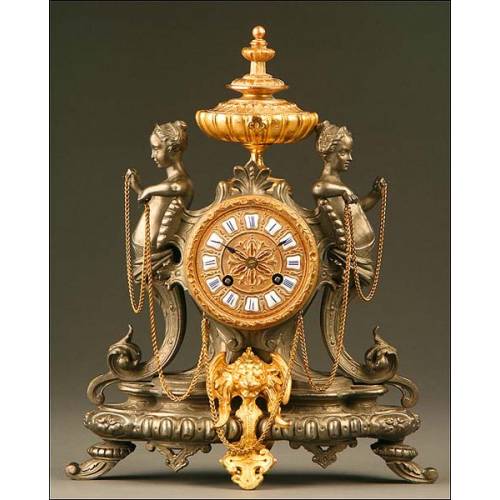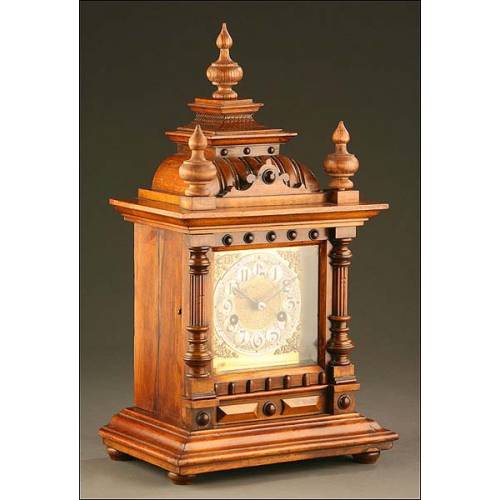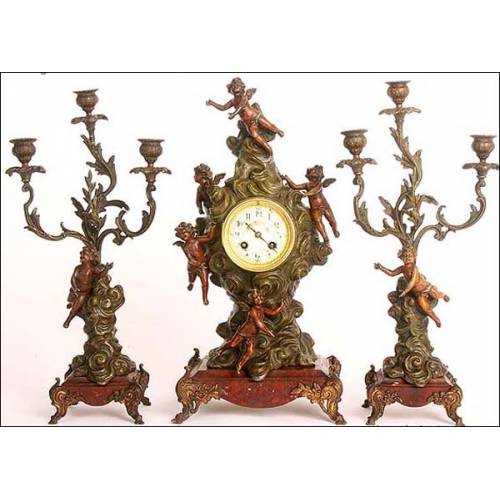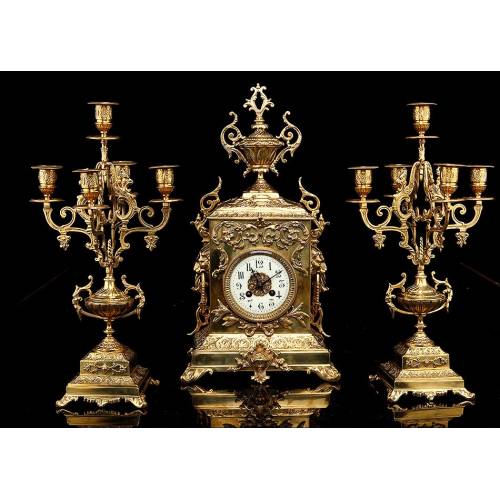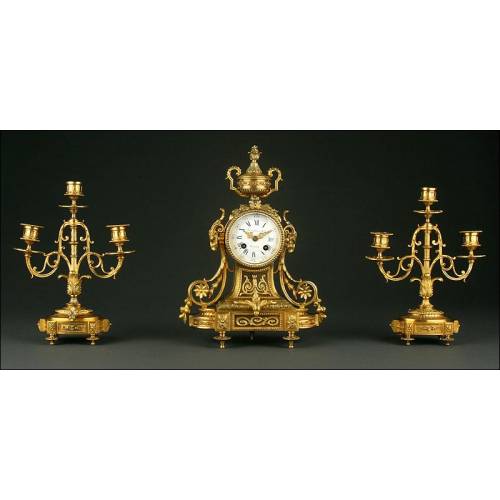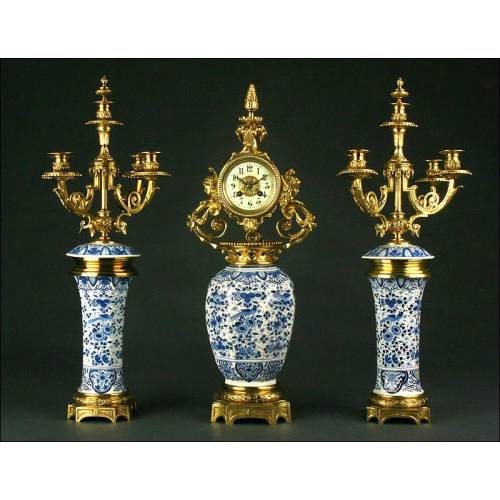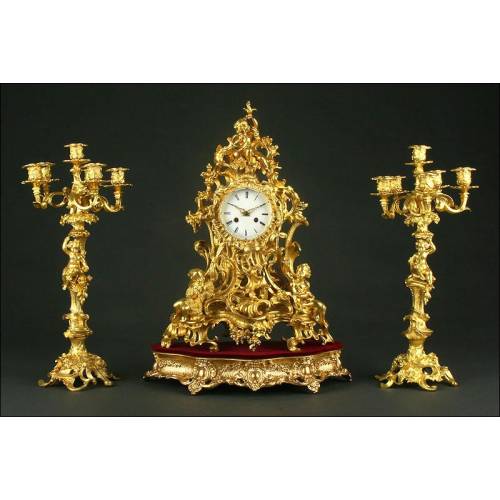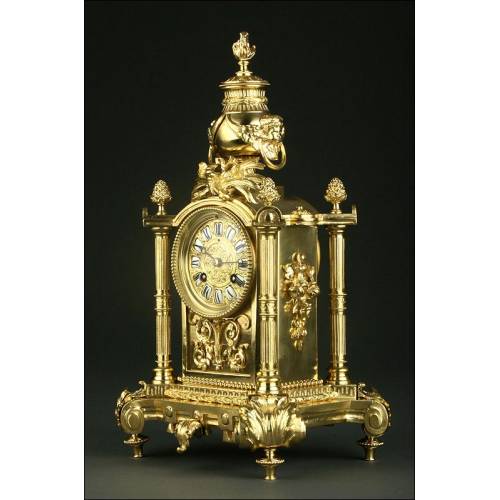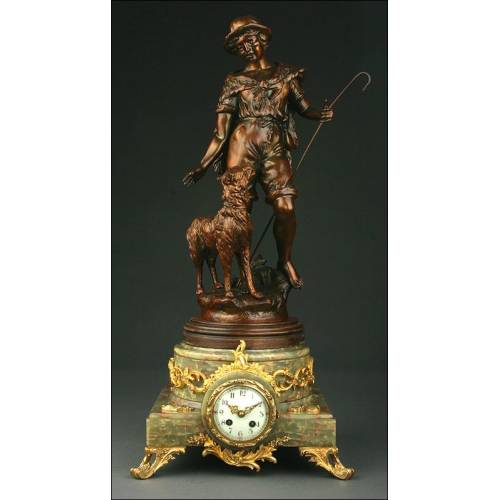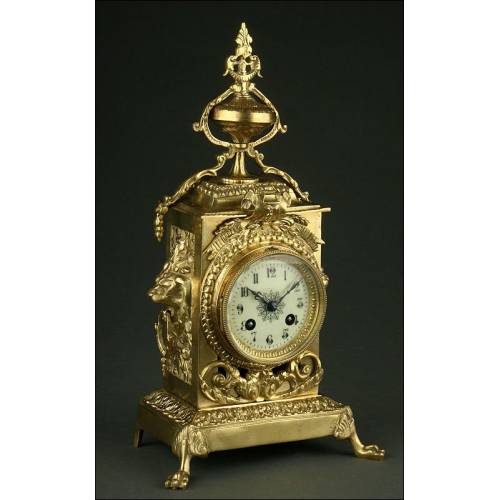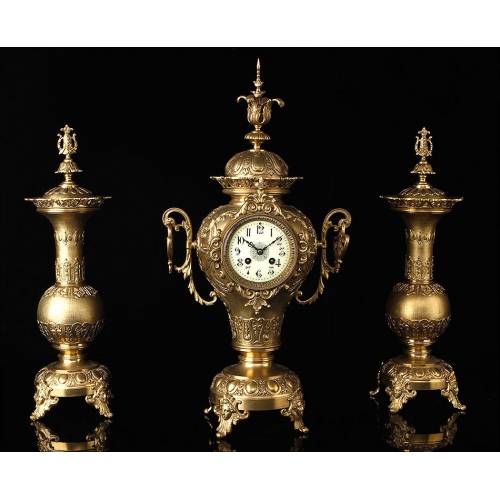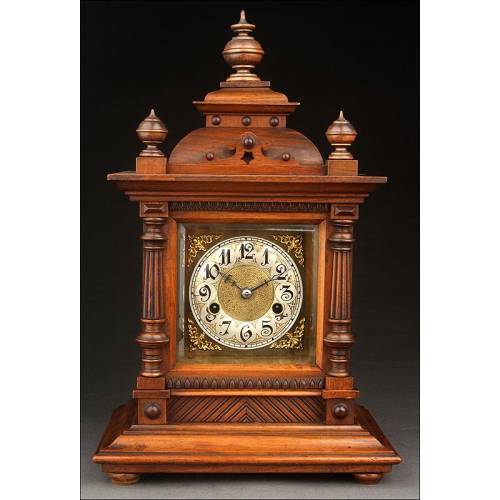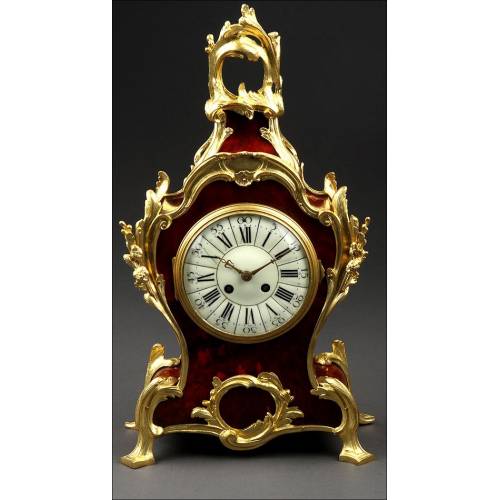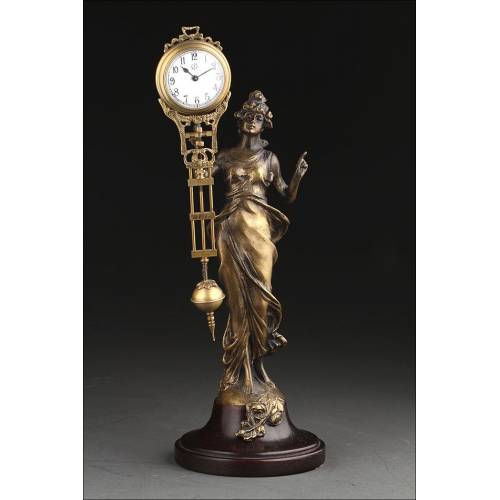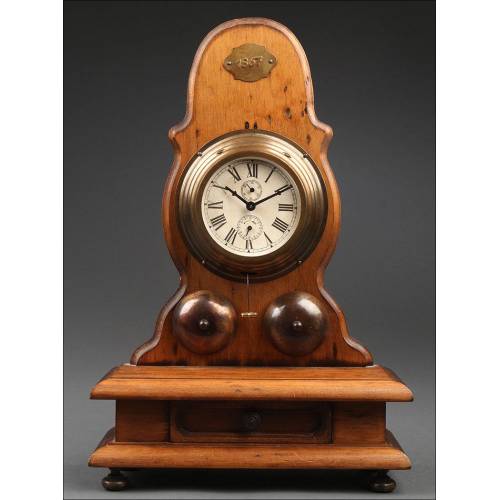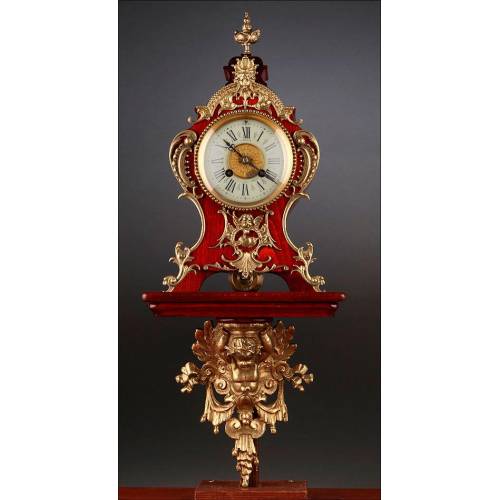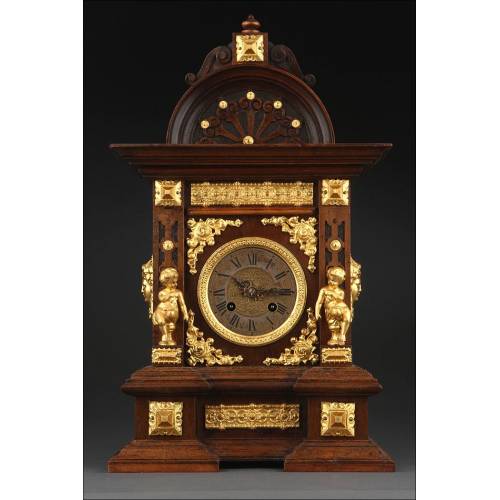C-710
Antique Oil Clock, Germany XIX Century.
Curious and antique oil clock with blown glass ampoule. Original from the 19th century. Collector's piece with lots of charm.
Sold!
Antique oil clock made in the 19th century, very well preserved and with original period blown glass ampoule. The pewter body is stylized and elegant, and in its upper part it holds the ampoule destined to contain the fluid. On the ring that supports it we can see the hours in Roman numerals engraved in the metal. The operation of this oil clock is very simple: after filling the ampoule with lamp oil, the wick is lit at the beginning of the day. As the wick is consumed, the oil level goes down and marks the time on the graduated scale. In addition to functioning as clocks, these curious devices also served as lamps. The clock shown in the photos has a stamp engraved on the base: it features two schematic figures ringing a large bell, above the inscription ETAIN FIN 95% (95% Fine Tin). As charming as it is authentic, this antique oil clock will stand out in a display case with curious antiques.History of Clocks - Oil Clock Historians believe that the first clocks were sundials. These mechanisms could not tell the time on cloudy days or at night, so it was necessary to create devices that worked independently of the sun. Clepsydras or water clocks were invented by the Egyptians; there is evidence of their use as early as 1500 B.C. This system was taken to Greece by Plato, and to Rome by Scipio Nasica. Shortly after, hourglasses appeared; one of the most curious examples was the one that Christopher Columbus carried on his voyage of the Discovery of Sand. This device measured 1.50 meters and was emptied every half hour. Oil clocks derive from the so-called spark plug clock, whose invention is attributed to the English King Alfred the Great (849-899). They were very popular during the 19th century, especially in low-income households that could not afford a mechanical clock. They are also known as silent clocks because of their lack of mechanism. Their operation is very simple: the glass ampoule is filled with lamp oil and then the wick is lit. As it is consumed, the fuel level marks the time of day on a graduated scale. Although not very accurate, these clocks made it possible to know the time approximately, both day and night.

